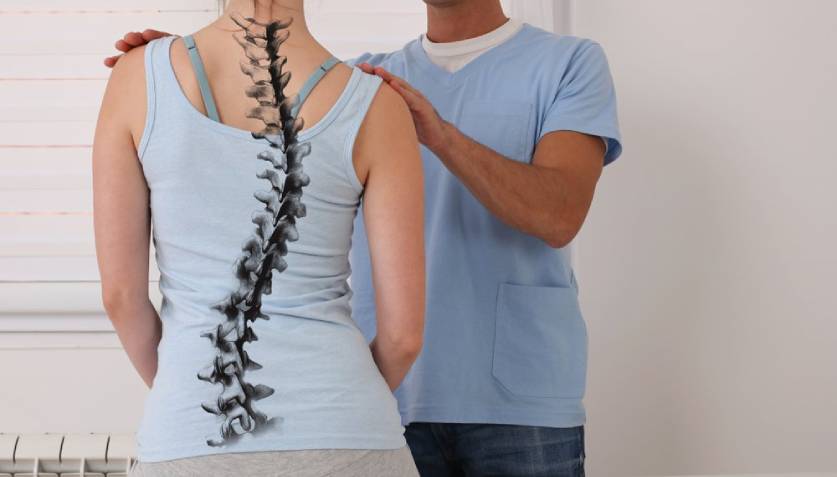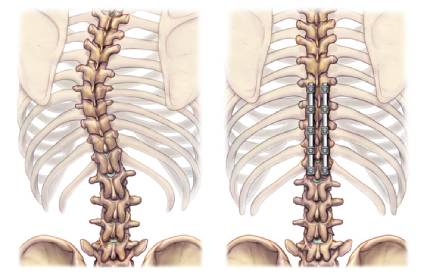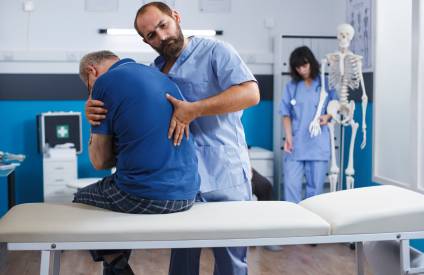
Personalized Care for Spinal Curvature Correction
Scoliosis can affect anyone, from children to adults, and it’s more than just an abnormal curve of the spine—it can impact posture, breathing, mobility, and confidence. Many of my patients come to me after noticing uneven shoulders, a tilted head, or persistent back discomfort. My goal is to provide advanced scoliosis correction surgery tailored to each individual, combining precision, safety, and long-term spinal health.
With modern techniques like growth modulation, vertebral body tethering, and 3D printing-assisted surgical planning, we can correct spinal deformities while minimizing tissue damage and preserving mobility. Every procedure I perform is customized to the patient’s age, curve severity, and overall health, ensuring optimal outcomes.
Understanding Scoliosis and Its Impact
Scoliosis is a sideways curvature of the spine, often shaped like an “S” or “C.” While mild cases may be unnoticed, significant curves can lead to chronic pain, posture problems, and even difficulty breathing in severe instances. Early detection allows for timely intervention, which can prevent long-term complications.
Children and adolescents are most commonly affected, but adult scoliosis—either idiopathic or degenerative—can also progress over time. I focus on identifying the root cause of each spinal curve and creating a treatment plan that balances correction with spinal flexibility.
Short Highlights:
- Abnormal spinal curves can affect posture, breathing, and mobility
- Early detection improves surgical outcomes
- Treatment is personalized based on curve type and patient age


Key Symptoms and When to Seek Help
Scoliosis can manifest in subtle ways. Crooked shoulders, uneven hips, a tilted head, or a visible spinal curve when bending forward are common signs. In some cases, back pain, stiffness, or fatigue can indicate progression of the curve.
Adults with degenerative scoliosis may experience nerve compression, leading to leg pain, numbness, or tingling. Recognizing these symptoms early helps prevent severe deformity and allows for less invasive correction techniques.
Short Highlights:
- Visible curve, uneven shoulders, or hips
- Back pain, stiffness, or fatigue in progressive cases
- Nerve symptoms in adult scoliosis may indicate spinal compression
Types of Scoliosis Correction Surgery
Depending on the severity and type of spinal curvature, several surgical approaches are available. Posterior spinal fusion remains the most common, allowing fusion of vertebrae to straighten the spine. Anterior spinal fusion is performed for certain thoracic curves, while vertebral body tethering (VBT) offers a minimally invasive alternative, especially for children, preserving spinal flexibility.
I also utilize growth modulation techniques in pediatric patients, encouraging healthy spinal development while gradually correcting curvature. Every procedure is planned with precision to maximize correction and minimize recovery time.
Short Highlights:
- Posterior and anterior spinal fusion for curve correction
- Vertebral body tethering preserves spinal mobility
- Growth modulation techniques for pediatric patients
Diagnostic and Planning Process
Before surgery, a comprehensive evaluation is essential. I rely on X-rays, MRI, and 3D imaging to assess curve severity, spinal flexibility, and vertebral rotation. Advanced 3D printing allows me to create patient-specific models for surgical planning, improving accuracy and reducing risks.
Understanding each patient’s anatomy and curve pattern ensures the chosen technique—whether fusion or tethering—achieves optimal correction while protecting neurological function.
Short Highlights:
- Comprehensive imaging including X-ray, MRI, and 3D scans
- Patient-specific models assist in precise planning
- Minimizes surgical risks and maximizes correction
Surgical Procedure and Technology
During scoliosis correction surgery, I use state-of-the-art techniques such as intraoperative navigation, 3D-assisted screw placement, and advanced growth modulation. For tethering procedures, flexible cords allow correction without rigid fusion, which is particularly beneficial for young patients.
Minimally invasive approaches, when suitable, reduce soft tissue trauma, minimize scarring, and allow faster recovery. These modern methods ensure patients regain posture, strength, and confidence with minimal complications.
Short Highlights:
- Precision screw placement using navigation systems
- Minimally invasive options reduce tissue trauma
- Tethering maintains flexibility in pediatric patients
Recovery and Rehabilitation
Post-surgery, a structured rehabilitation program is crucial. Patients begin with gentle physiotherapy, posture training, and mobility exercises. For children, monitoring growth and spine alignment continues until skeletal maturity.
Most adolescents return to daily activities within 4–6 weeks, while adults may take slightly longer. Pain is controlled effectively, and ongoing exercises help maintain spinal strength and flexibility.
Short Highlights:
- Gradual physiotherapy and posture exercises
- Monitoring pediatric growth for long-term results
- Return to normal activities within weeks for most patients
Benefits of Advanced Scoliosis Surgery
Modern scoliosis surgery offers more than straightening the spine—it improves posture, reduces pain, prevents progression, and enhances lung function in severe cases. Cosmetic concerns are addressed, but the focus remains on overall health and long-term functionality.
Advanced planning and minimally invasive techniques reduce blood loss, shorten hospital stays, and allow children and adults to resume daily life faster than traditional approaches.
Short Highlights:
- Improves posture, function, and lung capacity
- Reduced surgical trauma and shorter hospital stay
- Long-term correction with minimized complications
Why Choose Scoliosis Surgery in Chennai
Chennai has emerged as a hub for advanced spinal care, with access to modern operating theaters, experienced surgical teams, and comprehensive post-operative support. Choosing the right surgeon ensures precise correction, safety, and long-term spinal health
My focus is always on patient-centric care, using the latest technology and individualized treatment plans. From consultation to rehabilitation, every step is guided to restore spinal alignment, functionality, and quality of life.
Short Highlights:
- Access to advanced surgical technology and skilled teams
- Individualized treatment plans for each patient
- Complete care from diagnosis to rehabilitation
Conclusion – Regain Confidence and Health
Scoliosis doesn’t have to limit your life. With advanced surgical techniques, personalized planning, and structured rehabilitation, you can correct spinal deformities safely and effectively. Every patient is unique, and I ensure a tailored approach that prioritizes health, function, and comfort.
If you or your child are facing scoliosis, early consultation allows us to plan the best treatment path—whether fusion, tethering, or growth modulation—so you can regain mobility, reduce pain, and improve posture.
FAQ
Surgery is often recommended between 10–18 years when spinal growth slows. Early intervention ensures better curve correction and faster recovery, though adults with progressive deformities can also benefit.
Children typically resume daily activities within 4–6 weeks, while adults may take longer. Physiotherapy and posture exercises are essential to maintain correction and mobility.
Some fusion procedures slightly limit movement in fused segments, but the remaining spine retains sufficient flexibility for daily activities and most sports.
While modern techniques reduce risks, possible complications include infection, nerve injury, or implant issues. Thorough preoperative planning and advanced surgical methods minimize these risks
Yes. Techniques like vertebral body tethering or navigation-assisted surgeries allow correction with smaller incisions, less tissue damage, and faster recovery, particularly in pediatric patients.

